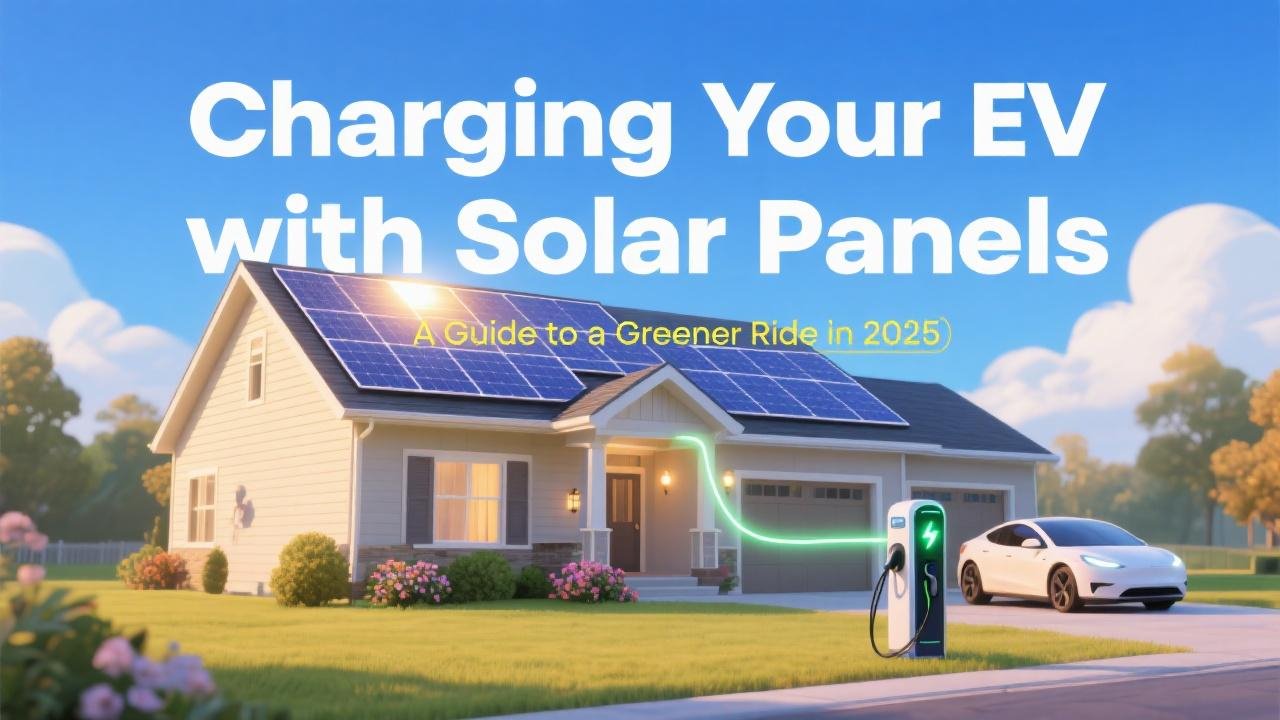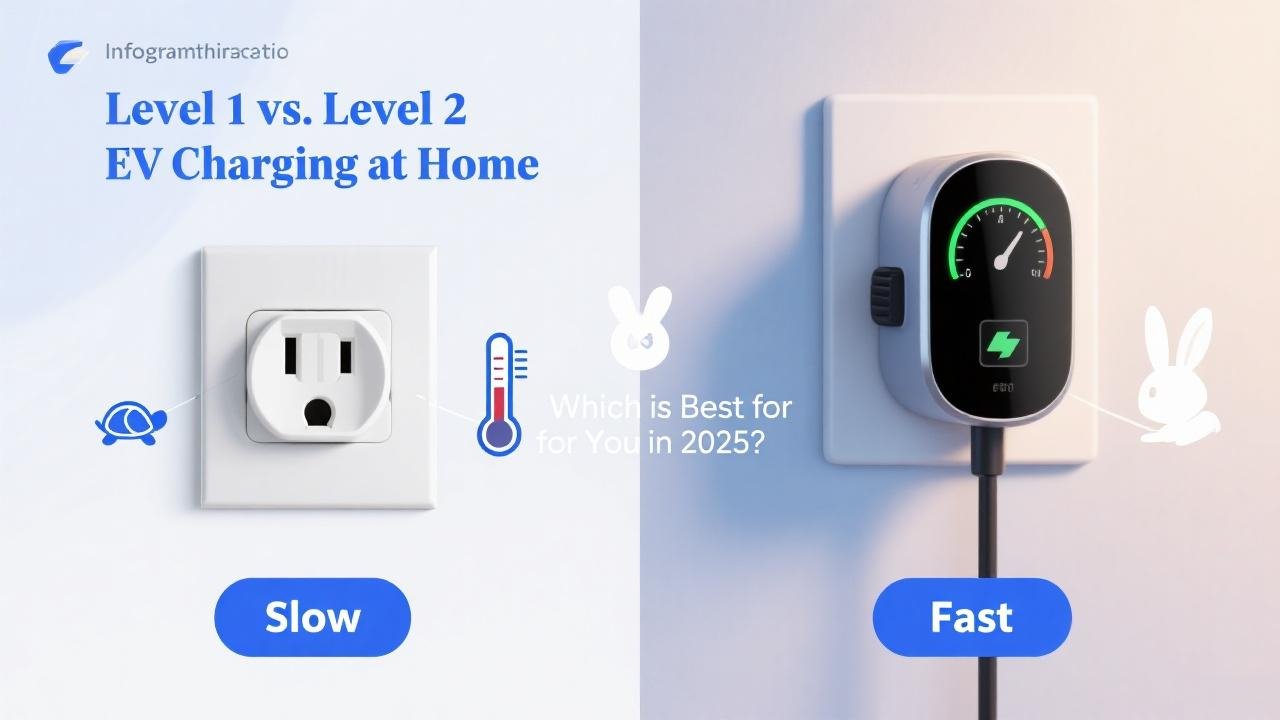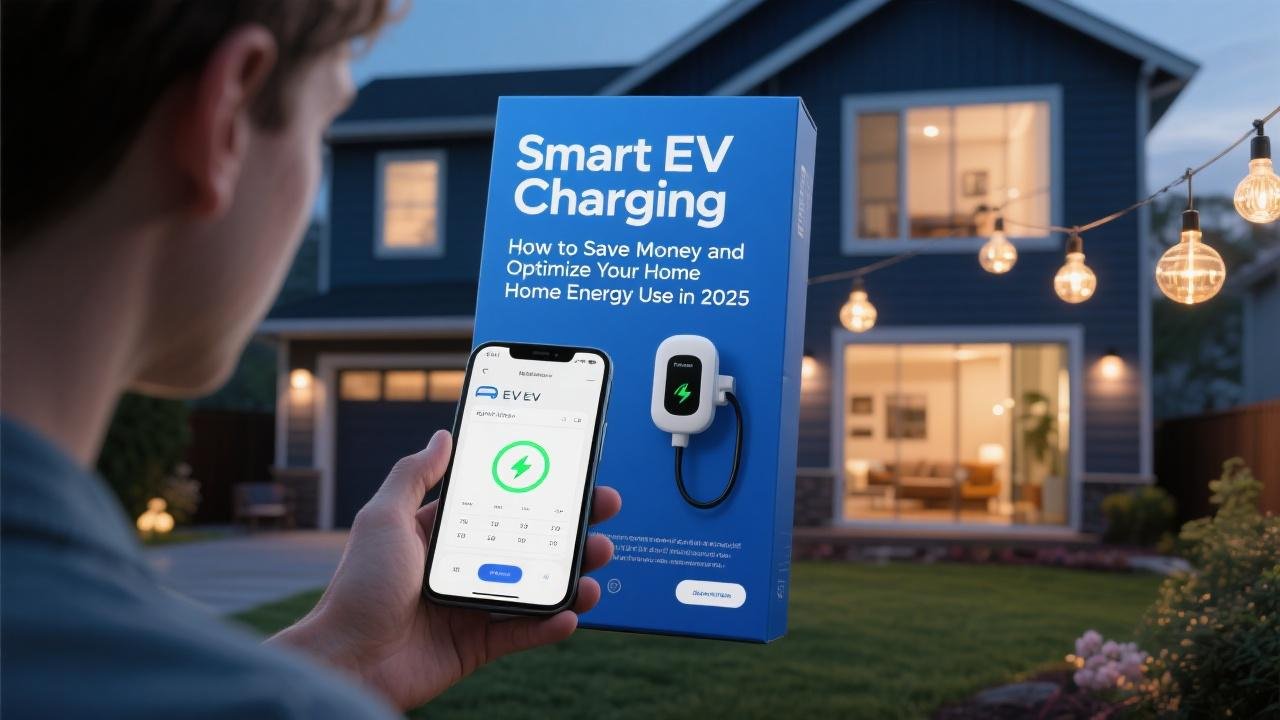The Ultimate Synergy for Sustainable Transportation
Owning an electric vehicle (EV) is a fantastic step towards reducing your carbon footprint and transportation costs. Pairing it with a home solar panel system takes those benefits to a whole new level. In 2025, charging your EV with clean energy generated directly from your rooftop is not just a futuristic dream but a practical and increasingly popular reality for homeowners. This combination creates a powerful home energy ecosystem, offering significant savings and true energy independence.
This guide explores the benefits of charging your EV with solar panels, how it works, and what you need to consider for an optimal setup.
Why Charge Your EV with Solar Power? The Compelling Benefits:
- “Fuel” Your Car for Free (or Nearly Free):
- Once your solar panel system is paid for, the sunlight it captures is free. Using this self-generated electricity to charge your EV means you’re essentially driving on sunshine, drastically reducing or even eliminating your “fuel” costs for transportation.
- Maximize Your Solar Investment ROI:
- If your solar system produces more electricity than your home consumes during the day, charging your EV with this excess power is a highly valuable use of that energy. It’s often more financially beneficial than sending all excess power back to the grid, especially if your utility has low net metering export rates or Time-of-Use (TOU) plans where daytime export values are lower.
- Reduce Your Carbon Footprint Even Further:
- While EVs produce zero tailpipe emissions, the electricity used to charge them can come from fossil fuel sources if drawn from the grid. Charging with your own solar power ensures your EV is truly running on 100% clean, renewable energy, minimizing its overall environmental impact.
- Increase Energy Independence:
- Relying on your own solar generation to power your car reduces your dependence on fluctuating gasoline prices and the public electricity grid.
- Enhance Home Energy Management:
- Integrating EV charging with solar (and potentially home battery storage) allows for smarter management of your overall home energy flow, optimizing for cost savings and self-sufficiency.
How Does Solar EV Charging Work?
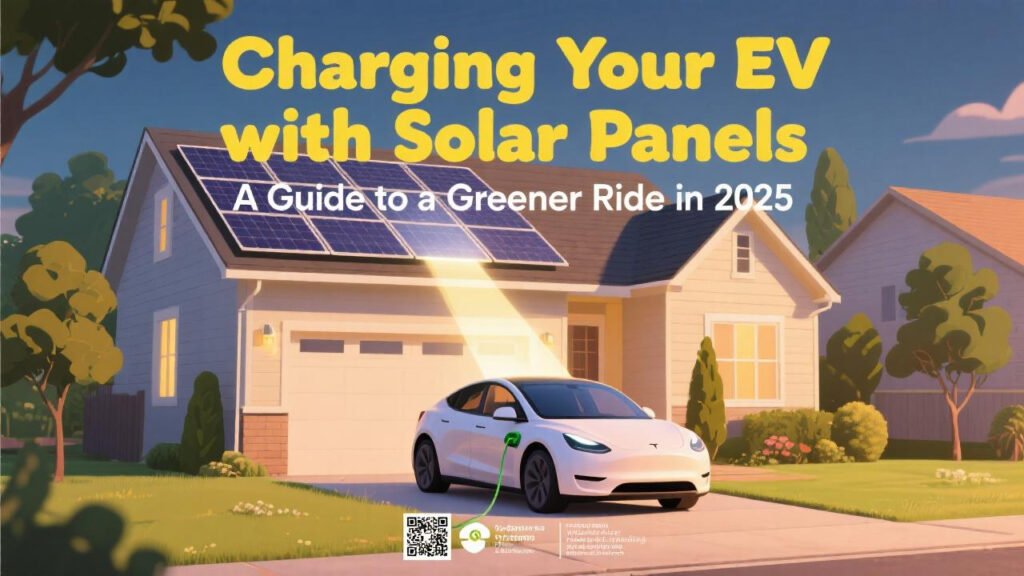
There are a few primary ways to charge your EV using solar panels at home:
- Grid-Tied Solar System (Standard Setup):
- Daytime Charging: If your EV is at home during the day when your solar panels are producing electricity, your Level 2 EV charger will draw power from your solar system first. If your solar production exceeds your home’s needs (including EV charging), the remainder goes to the grid (or a home battery if you have one). If your EV charging demand plus home consumption exceeds solar production, the shortfall is drawn from the grid.
- Net Metering Benefits: Even if you charge at night, the excess solar energy your system sent to the grid during the day (earning you net metering credits) can help offset the cost of charging your EV from the grid overnight.
- Grid-Tied Solar System with a Smart EV Charger:
- “Charge on Sunshine” Mode: Many smart EV chargers in 2025 can be programmed to specifically use only excess solar power. The charger monitors your solar production and home consumption. When it detects surplus solar energy being generated, it will automatically direct that power to charge your EV. If solar production drops (e.g., due to clouds), it can pause or reduce charging speed to avoid drawing from the grid, if you’ve set it that way.
- Grid-Tied Solar System with Home Battery Storage and Smart EV Charger:
- Ultimate Flexibility: This is the most comprehensive setup.
- Excess solar can charge the home battery and/or the EV during the day.
- You can use stored solar energy from your home battery to charge your EV in the evening or overnight, further avoiding grid power.
- Smart systems can prioritize loads – e.g., ensuring the home battery has enough for evening home use before diverting significant power to the EV, or vice-versa based on your settings.
- Ultimate Flexibility: This is the most comprehensive setup.
- Off-Grid Solar and EV Charging:
- For homes completely off the grid, a sufficiently large solar array and battery bank are essential to meet all household needs, including EV charging. This requires careful system sizing and energy management.
Key Components and Considerations for Solar EV Charging in 2025:
- Sufficient Solar Panel System Size:
- Your solar array needs to be large enough to cover your average household electricity consumption AND the additional load from EV charging. An average EV might consume 2,000-4,000 kWh per year or more, depending on mileage and efficiency. Factor this into your solar system sizing calculations.
- Level 2 EV Charger:
- Essential for efficient home charging. Smart chargers with solar integration capabilities are highly recommended.
- Home Battery Storage (Optional but Highly Recommended):
- A home battery (like a Tesla Powerwall or Enphase IQ Battery ) significantly enhances the benefits of solar EV charging by allowing you to store solar energy for charging at any time, especially if you’re not home during peak solar production hours. It also provides backup power.
- Energy Monitoring System:
- A good monitoring system (often integrated with your solar inverter, battery, or smart charger) allows you to track your solar production, home consumption, battery state of charge, and EV charging, helping you optimize usage.
- Your Driving and Charging Habits:
- When do you typically charge your EV? If you can charge during daylight hours, direct solar charging is easier. If you primarily charge at night, a home battery or reliance on net metering credits becomes more important.
- Net Metering Policies and Utility Rates:
- Understand your utility’s net metering policy (how they credit you for excess solar) and if they offer Time-of-Use (TOU) rates or specific EV charging rates. This will influence the most economical charging strategy.
Can You Go “Off-Grid” with Your EV Charging?
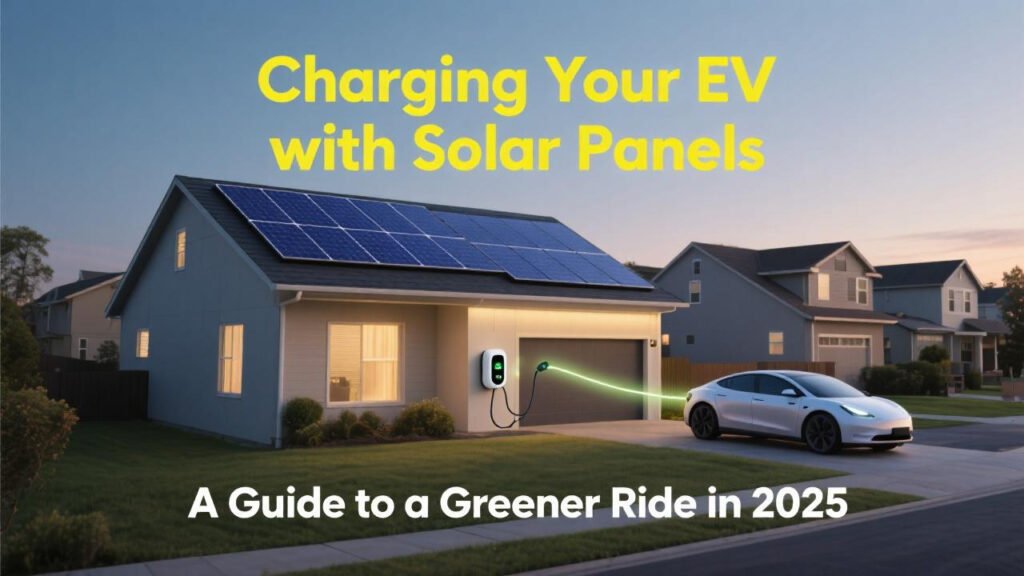
While technically possible with a large enough solar and battery system, relying solely on off-grid solar for all your EV charging needs requires a very robust and often expensive setup. Most “solar EV charging” for residential use still involves a grid-tied system that provides flexibility and backup. The grid acts as a buffer when solar production is low or charging demand is high.
The Perfect Pairing for a Sustainable Future
Charging your electric vehicle with home-generated solar power in 2025 is the epitome of clean energy synergy. It maximizes your financial savings by using free solar energy as “fuel,” further reduces your environmental impact, and provides a high degree of energy independence. While the initial investment in solar panels, an EV charger, and potentially a home battery can be significant, federal tax credits (like the 30% credit for solar and solar-charged batteries ) and other local incentives can help offset these costs.
To design an optimal solar EV charging system, consult with qualified solar and electrical professionals. They can help you size your solar array appropriately, select the right smart charger, and discuss the benefits of integrating a home battery. Platforms like EnergySage can be a valuable starting point for researching these technologies and connecting with vetted installers who can help you create your complete home energy ecosystem.

